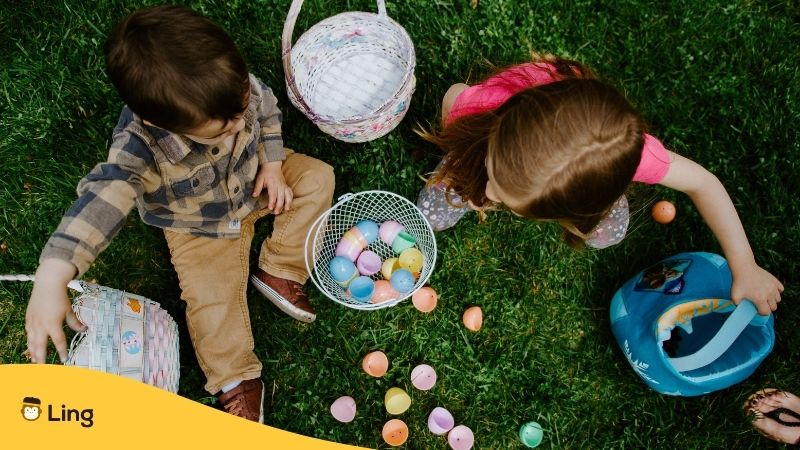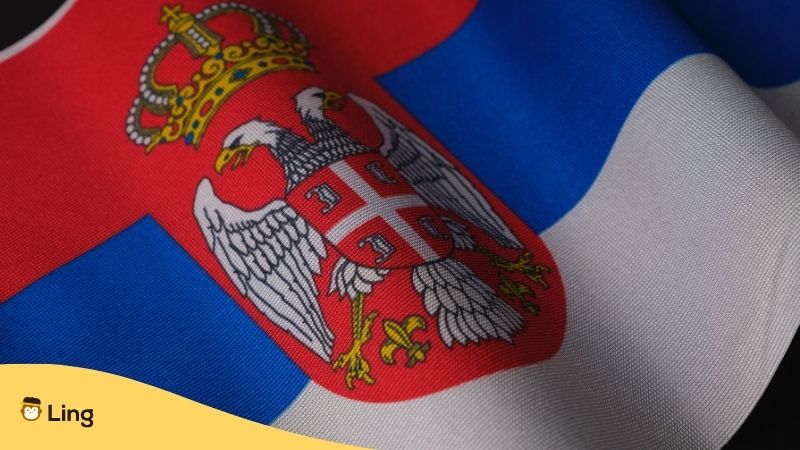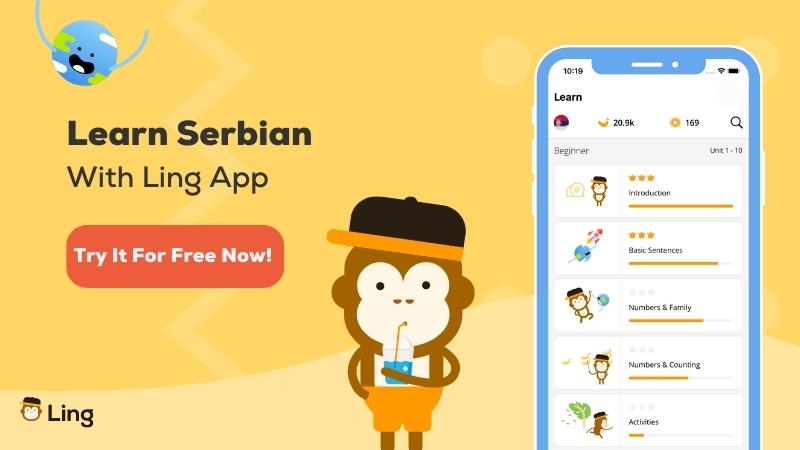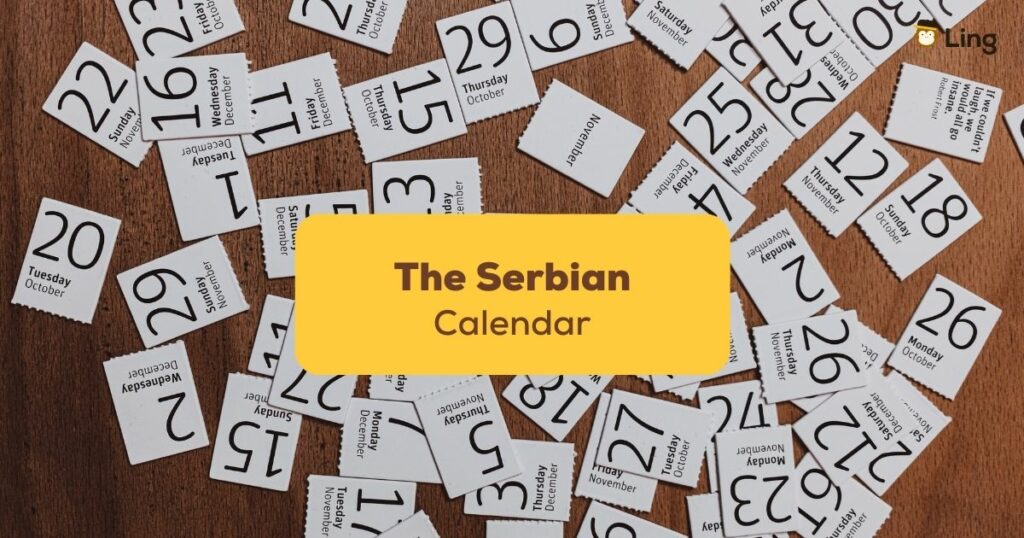The Serbian calendar is a mish-mash of multiple cultural influences and is an integral part of Serbian culture and identity. The official calendar is a combination of several calendars, including the Julian calendar, the Gregorian calendar, the Jewish calendar, the lunar calendar, and the Serbian Orthodox Church calendar. In this blog, we will explore the history and significance of the Serbian calendar and its role in Serbian culture and tradition.
The Julian Calendar
The Julian calendar was created by and named after Julius Caesar in 45 BC and was used throughout the Roman Empire and Eastern Roman Empire until as late as the 16th century. It was later adopted by the Serbian Orthodox Church and remained in use until 1919. The Julian calendar is a solar calendar that is based on the length of a year of 365.25 days, with extra day added every four years to account for the extra 0.25 days. However, this system is not entirely accurate, and over time, the calendar year began to drift out of sync with the solar year, resulting in a discrepancy of about 10 days over 1,000 years.
The Gregorian Calendar
In 1582, Pope Gregory XIII introduced the Gregorian calendar, which was a reform of the Julian calendar. The Gregorian calendar is also a solar calendar, but it uses a more accurate calculation of the length of the year, resulting in a more precise calendar and more accurate measurement of time. The Gregorian calendar was gradually adopted by Catholic countries, and later by Protestant countries, but it was not adopted by the Orthodox Church and Serbian patriarchs until early in the 20th century.
The Serbian Calendar
The Serbian Orthodox Church follows the Roman calendar, which means that the old Serbian calendar is 13 days behind the Gregorian calendar. This means that Christmas Day in the Serbian calendar falls on January 7th, and New Year’s Day falls on January 14th. The Serbian calendar is also used for the calculation of Orthodox religious holidays, such as Easter, which is calculated according to the old calendar.
The Serbian calendar is an essential part of Serbian culture and tradition. It is celebrated with a variety of festivals and events throughout the year, and it is an opportunity for the Serbian people to come together for a knees-up to celebrate their heritage. Here are a few of the special dates celebrated throughout Serbia:
Serbian New Year – Српска Нова година
One of the most significant events on the Serbian calendar is the Serbian New Year, which is celebrated on January 14th. This day is known as the Serbian Old New Year, and it is a time for eating, drinking, reflection, and celebration.
Christmas – Божић
In Serbia, Christmas Day is celebrated on January 7th. Christmas in Serbia is a religious holiday that is celebrated with a variety of traditions and customs. One of the most important customs is the burning of the badnjak, which is a large oak branch that symbolizes the tree on which Christ was crucified. The badnjak is felled on Christmas Eve, and a log cut from it is burned in a ceremony that is a symbol of the renewal of life and the coming of the new year.
Christmas dinner is a big celebration for the Serbs and includes delicious dishes such as roast pork – pečenica being cooked on a wooden spit and the baking of a festive loaf of bread – česnica. The česnica is broken up by the family members, with one lucky diner getting a coin in their share as a symbol of good luck for the coming year.
Christmas is also a time for koleda when a group of masked young men visit the houses in the village to sing songs and perform magic tricks. Koleda is meant to bring wealth, health, and prosperity to the households the young men visit.

Easter – Велигдан
While celebrating the resurrection of Jesus Christ, Serbs will partake in a bit of egg tapping. This involves getting a hard-boiled egg and knocking it against someone else’s egg with the aim of breaking its shell while yours remains undamaged.
Slava – Cлава
The Serbian calendar is also marked by a variety of other festivals and events, such as the Slava, which is a family holiday that celebrates the patron saint of the family. The Slava is a time for families to come together and share a meal, and it is an opportunity to honour their ancestors and traditions. Slava is pre-Christian in origin, but some of the most common feast days are related to Christianity and celebrate John the Baptist (Jan 20), St. George (May 6), St. Demetrius (Nov 8), St. Michael (Nov 21), and St. Nicholas (Dec 19).
Vidovdan – Видовдан
Falling on 28 June, Vidovdan is of special importance to the ethnic Serbs. A number of important historical events took place on this date, including the slaying of Serbian Prince Lazar in 1389 at the Battle of Kosovo, the assassination of Franz Ferdinand in 1914 that triggered the First World War, and the signing of the Treaty of Versailles in 1919 marking the end of hostilities.
Lazarus Saturday – Лазарева субота
A celebration of the resurrection of Lazarus as told in the Gospel of John, Lazurus Saturday is also a feast at which guests will raise a glass to Prince Lazar, who, as we just saw, died heroically while fighting the Ottoman Turks.

National Holidays
In addition to religious holidays, the Serbian calendar also includes a variety of national holidays, such as the Serbian National Day, which is celebrated on February 15th. This day marks the anniversary of the First Serbian Uprising, which began in 1804 and led to the establishment of the modern Serbian state.
The Serbian calendar also includes a variety of cultural events, such as music festivals, art exhibitions, and film festivals. These events are an opportunity for people to come together and celebrate their shared identity.
Useful Serbian Calendar Vocabulary
Keep Your Serbian Up To Date With Ling

Learning Serbian can be intimidating, but with the Ling app, learning a new language is made easy through specially tailored classes. From in-depth lessons made by native speakers to gamified features and challenging quizzes, this app has it all for you! And did you know that it also comes with a chatbot? Now you do not just learn passively but also simulate real-life conversations. Ready to give this a go? Download it today from Google Play or App Store now to get started!
































































